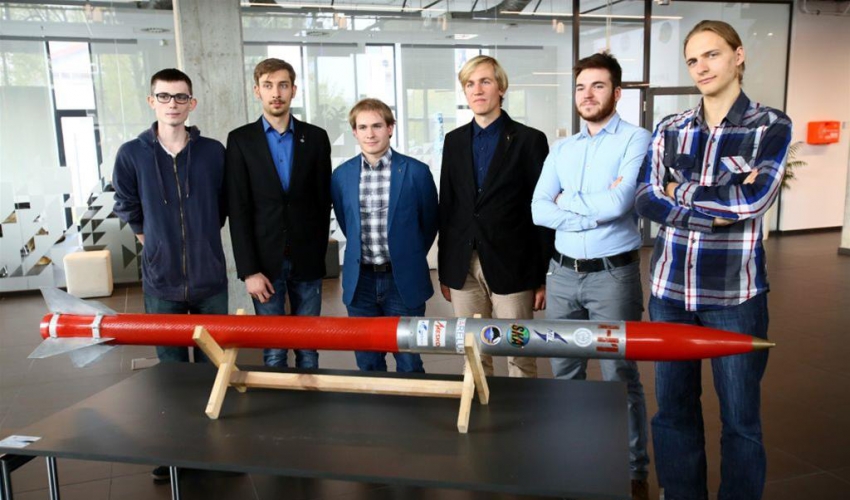Students of Warsaw University of Technology have built a new rocket TuCan
Students of Warsaw University of Technology can boast a new rocket TuCan. It will be used to lift small research instruments into the atmosphere, so-called CanSats, and conduct experiments there. The first launch will take place on 29 October in Toruń.
Students from Rocketry Section of the Students' Space Association at Warsaw University of Technology have already built several rockets, including supersonic rocket H1 and Amelia series rockets. TuCan rocket is over 2 meters long and weighs 26 kg. Compared to the previous rockets it has a completely different task - it is a CanSat Launcher.
"Unlike rockets we built before, TuCan is a target rocket. We will make it available to those who want to go up a few kilometres and carry out their own research by means of the so-called CanSat experiments" - told PAP TuCan project coordinator Jan Kierski from Warsaw University of Technology.
CanSats are amateur mini-satellites the size of a 0.33 l soda can and weight up to 350 g. They are ejected from rockets at a fixed altitude, usually the maximum ceiling of the rocket. They can be used to can carry out various experiments - the creators' imagination is the limit. "They can be used to measure temperature, pressure, cosmic rays at an altitude of a few kilometres. You can analyse the winds that blow at this altitude. You can also build and test a controlled parachute, or a turbine driven by the fall" - explained Kierski.
At the moment there are no launchers capable of carrying more than six experiments of this type. TuCan is leader in this field, it will carry as many as eight. "It can also be quite easily converted into a larger rocket, which will accommodate up to 12 experiments" - said the project coordinator.
According to the calculations the rocket will allow to lift the experiment to an altitude of four kilometres. However, the exact ceiling can be given only at the launch. Here TuCan also stands out among CanSat Launchers built in other countries. Currently they reach the ceiling of less than 3 km, usually 1-1.5 km.
The first launch is scheduled for October 29. The rocket will take off from the military training ground in Toruń. After the engine disengages and the maximum ceiling is reached, the system ejecting CanSats from the rocket will engage. Then, the rear part of the rocket, which houses the engine, will disconnect, and both parts will descend on parachutes and land.
CanSat competitions are currently held in several countries in Western Europe and the United States. Next year, the SKA Rocketry Section wants to organize CanSat competition in Poland. CanSat competition is only the beginning of the tasks that the rocket and students face. "Possibilities of development of the launcher are big and we can rebuild it, enlarge and extend the engine, so that in the future we could fly higher - to an altitude of up to eight kilometres" - emphasised Jan Kierski.
The idea to build the rocket was conceived in 2013. In July 2016 members of the Rocketry Section completed the design work. Almost all the components of the device have been manufactured in Poland, and the engine head and body have been built by the SKA Rocketry Section members themselves.
PAP - Science and Scholarship in Poland
Photo: PAP 2016 / Stach Leszczyński

